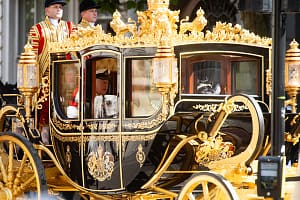Public access defibrillators are being widely rolled out across towns, cities and rural areas throughout the UK in a bid to improve survival rates of those who suffer sudden cardiac arrest.
However, these efforts to save lives are being jeopardised by greedy and thoughtless individuals. Appalling data shows that defibrillator theft has increased by over 180% since 2020, leaving many communities without vital, life-saving devices.
According to global defibrillator suppliers , Aero Healthcare, installing devices and keeping them protected should remain a priority for communities, despite the rise in thefts.
Data collected by a freedom of information request has highlighted the stark reality of defibrillator theft and vandalism in the UK. In 2020 alone, around 61 devices were reported stolen, with the figure dropping to 54 in 2021, leaving communities without essential life-saving options for those suffering cardiac arrest.
Areas like the West Midlands, West Mercia and Greater Manchester are recording high numbers of theft and vandalism.
Perhaps the saddest, and most disgusting, truth is that in 2022, the number of vandalism and theft reports doubled, with 112 devices affected. From schools to workplaces to community centres, a huge number of communities were put at risk due to negligent criminal behaviour, with devices stolen simply to make a profit. The most awful consideration is that some defibrillators were vandalised as part of a mindless attack.
There are now greater calls for the Government to impose tougher sentences on those who choose to steal or destroy devices. Currently, those caught are required to pay fines and serve a suspended prison sentence, with more serious cases offering less than five years imprisonment. What’s more, communities are left to find the funds to purchase a new device and case.
Sadly, the UK has recently seen some shocking revelations about defibrillator theft. Possibly the most blood-curdling example comes from a paramedic convicted of stealing devices, worth more than £10,000 each, and selling them on to a buyer in the Czech Republic.
From the sales, he profited by almost £235,000, removing 47 devices from ambulance stations in the North West. His punishment: repay over £30,000 and serve three years in prison. It’s unclear how many lives his actions affected.
Mindless pranks, reported by Durham Constabulary, are also jeopardising lives. In one example, they found senseless pranksters supergluing cases shut, meaning devices couldn’t be accessed when they were vitally needed. South Wales police also responded to reports of criminals removing defibrillators from protective cases and throwing them in a river.
Opportunists are also taking advantage of available devices. Across Birmingham, there has been a spate of thefts with criminals selling devices to the black market. Buyers from overseas are purchasing stolen defibrillators, enabling thieves to profit. Sadly, communities are left to fundraise for new devices or hope for a donation.
Defibrillators remain an essential part of many communities. Fortunately, according to Aero Healthcare’s defibrillator expert, Oscar Palmer, there are steps device owners can take to ensure the safety of their devices.
He said, “With defibrillator thefts on the rise, those with external and internal devices must be wary and remain vigilant. Anyone looking to offer a public access device can use an alarmed or locked cabinet as an extra deterrent.”
Public access defibrillators need a secure external case to keep them at the optimal temperature for functioning, but they also offer an additional layer of security for devices.
Palmer continued, “Locked cabinets have a PIN code that’s only shared with first responders in an emergency that need access to your device.
“If your device is registered with a local ambulance service or The Circuit, you’ll share this information which will be passed on to 999 call handlers. They will only share PIN details if your device is used, and you will also be notified that the device has been handled.”
More local communities, including both rural and urban areas, now offer some form of external defibrillator, meaning they need secure storage.
Oscar added, “We understand that peace of mind is essential when purchasing a defibrillator, that’s why an alarmed case is always a sensible option. Its loud, high-pitched siren immediately alerts those nearby when the door is opened. In an emergency, it draws help near the scene. In a theft, it immediately alerts those nearby that the door is opened, deterring thieves.”
The rising issue of defibrillator thefts and vandalism is deeply concerning, sparking worry amongst local communities and ambulance services. As invaluable, life-saving tools, they’re essential for increasing the chance of survival, so their removal could be life-threatening.
As sudden cardiac arrest doesn’t discriminate, many rural and urban areas are opting to increase the number of devices available. Sadly, their theft and destruction pose a severe threat to public safety.
Communities and local authorities must unite in their efforts to protect these life-saving devices, ensuring they remain accessible for emergency use only.
Choosing a suitable cabinet and registering devices offer a level of deterrence for thieves and vandals. It’s also clear that with a 183% increase in damage and theft, there must be more education about the benefits of the devices and tougher legislation in place to penalise criminals.






Leave a Comment